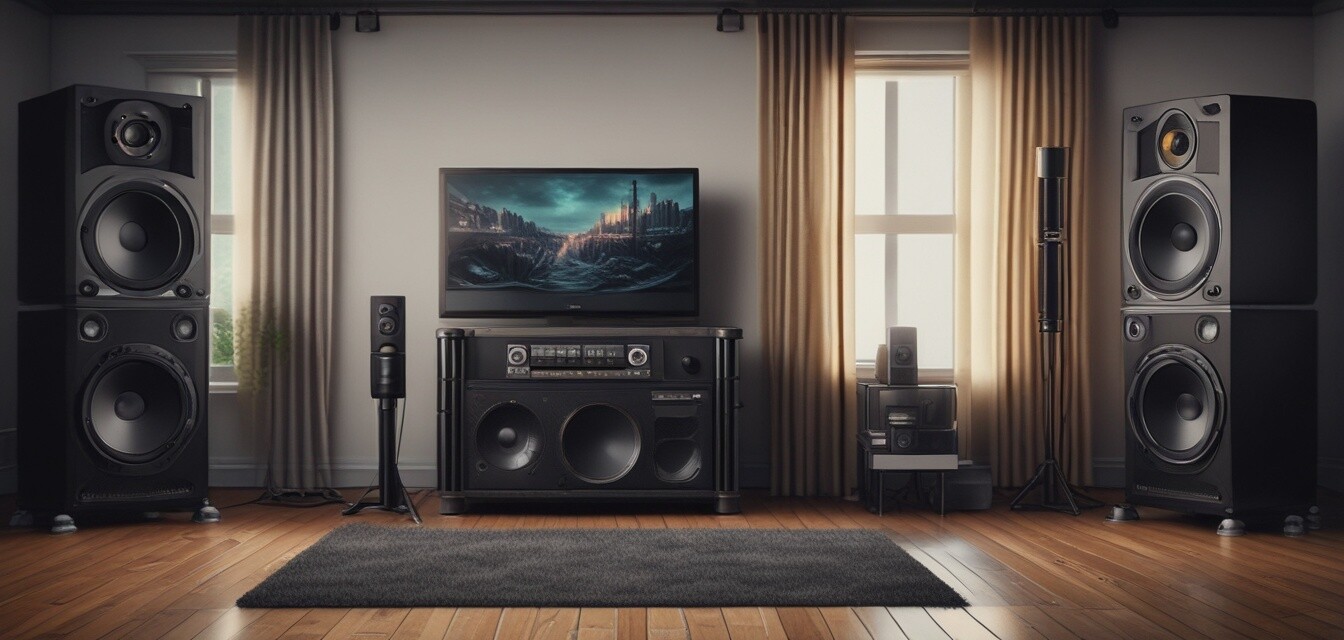
Understanding the Importance of Speaker Sensitivity
Key Takeaways
- Speaker sensitivity measures how efficiently a speaker converts power into sound.
- A higher sensitivity rating usually means a louder sound with less power.
- Understanding sensitivity can help you choose the right speakers for your needs.
- Factors like room size and amplifier pairing affect the performance of speakers based on their sensitivity rating.
When it comes to choosing speakers that truly elevate your audio experience, one of the most critical specifications to consider is speaker sensitivity. Understanding this concept can help you navigate the myriad of options available on the market today. Speaker sensitivity plays a vital role in determining how well a speaker performs and how enjoyable your listening experience will be.
What is speaker sensitivity?
Speaker sensitivity refers to how well a speaker converts power (measured in watts) into sound output (measured in decibels, or dB). It is a key specification that can drastically affect the performance of your audio system. The higher the sensitivity rating, the more efficient the speaker is at producing sound.
How is speaker sensitivity measured?
Speaker sensitivity is typically expressed in decibels (dB) at a certain distance (usually 1 meter) with a specific power input (commonly 1 watt). For instance, a speaker rated at 90 dB at 1 watt and 1 meter will produce a sound level of 90 dB when fed 1 watt of power.
Why does speaker sensitivity matter?
Understanding speaker sensitivity is important for several reasons:
- **Amplifier Compatibility**: Knowing the sensitivity helps you match your speakers with the right amplifier. High sensitivity speakers require less power to achieve a given sound level, making them easier to drive.
- **Listening Environment**: The acoustics of your listening area—like room size and furniture placement—can amplify or dampen sound, making sensitivity even more critical.
- **Personal Preference**: Some listeners prefer a louder output without cranking up the volume on their amplifier. High sensitivity speakers can deliver a more dynamic sound without requiring extra power.
Comparing sensitivity levels
| Sensitivity Rating (dB) | Power Requirement (watts) | Typical Use Cases |
|---|---|---|
| 85-89 dB | 50 - 100 watts | Home theater systems, larger rooms |
| 90-94 dB | 25 - 50 watts | General use, smaller rooms |
| 95+ dB | 10 - 25 watts | Portable speakers, small spaces |
Factors influencing speaker sensitivity
Several factors contribute to the overall sensitivity of a speaker:
- Driver Design: The materials and construction of speaker drivers influence how efficiently they convert power into sound.
- Cabinet Design: How a speaker cabinet is designed can affect sound waves and ultimately affect sensitivity ratings.
- Power Handling: The maximum power a speaker can handle without distortion can relate to its sensitivity, as it determines how much sound it can generate at higher outputs.
Common misconceptions about speaker sensitivity
While understanding sensitivity is essential, several misconceptions can mislead consumers:
- Higher sensitivity means better sound quality: Not always! While sensitivity affects volume, sound quality also depends on other factors like driver materials and tuning.
- All sensitive speakers work well with any amplifier: Be sure to check the wattage requirements for your amplifier; too low a power rating can lead to distortion and poor sound quality.
- More watts always equal louder sound: It might seem intuitive, but a speaker's sensitivity rating can mean a lower wattage speaker can outperform a higher wattage one in terms of volume.
Tips for choosing speakers based on sensitivity
When shopping for speakers, keep the following tips in mind:
- **Calculate your space**: Measure your room size to determine if high sensitivity speakers are necessary.
- **Pair appropriately**: Ensure your amplifier matches the speaker's sensitivity and power requirements.
- **Test before buying**: If possible, listen to the speakers in person to assess their sound performance.
Conclusion
Understanding speaker sensitivity is crucial for making informed decisions when buying audio equipment. By considering this factor, you can ensure that your speakers not only fit your space but also complement your listening preferences. For additional information on various types of speakers, check our sections on Bluetooth speakers, bookshelf speakers, and home theater systems.
Pros
- High sensitivity speakers provide louder sound at lower power.
- They can be more compatible with various amplifiers.
- Ideal for small to medium-sized spaces.
Cons
- Higher sensitivity doesn't always equate to better sound quality.
- May not be ideal for larger rooms without sufficient amplifier power.
- Can be more expensive due to advanced technology used in design.
For more tips and guides on buying speakers, explore our Buying Guides category.